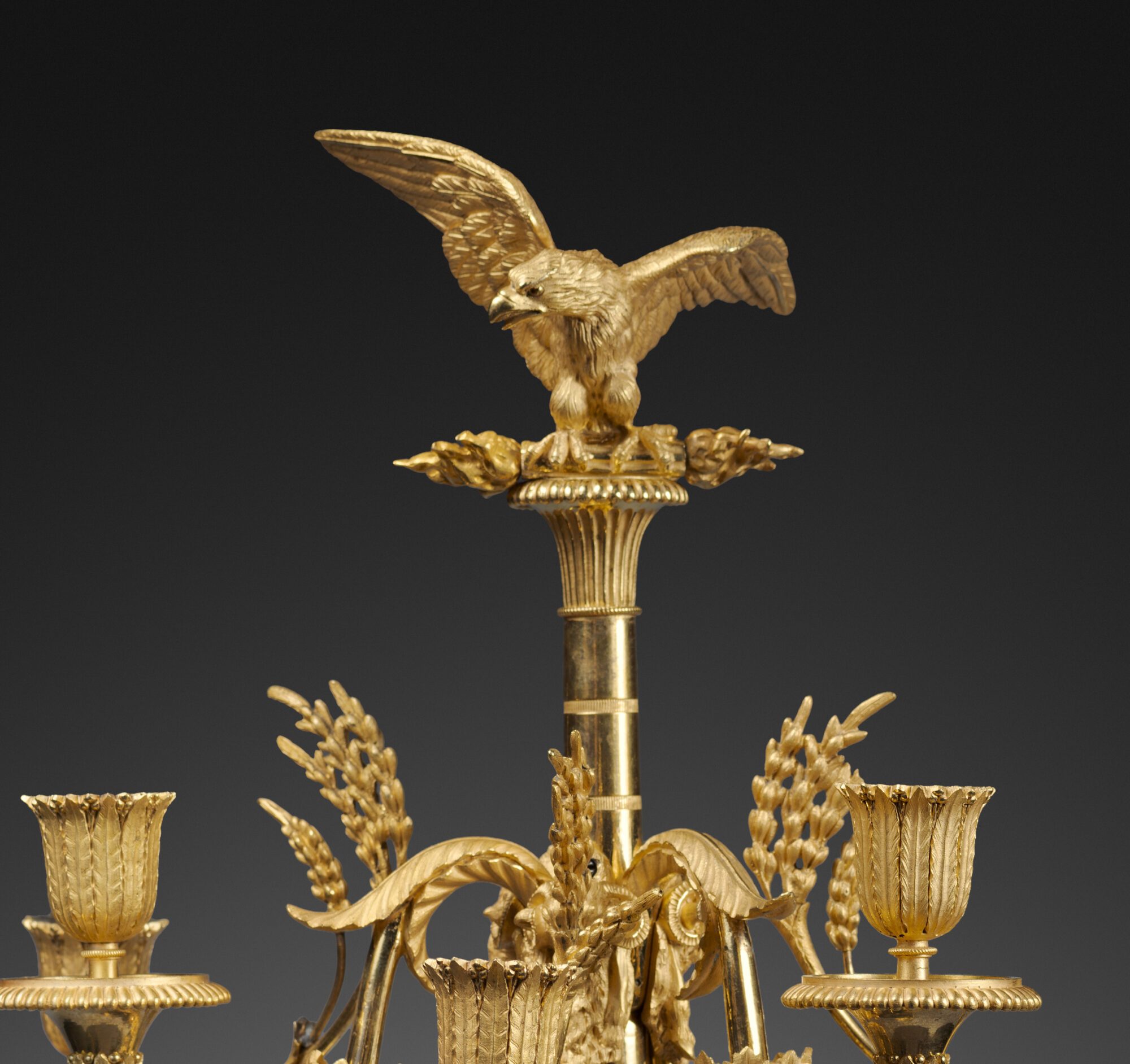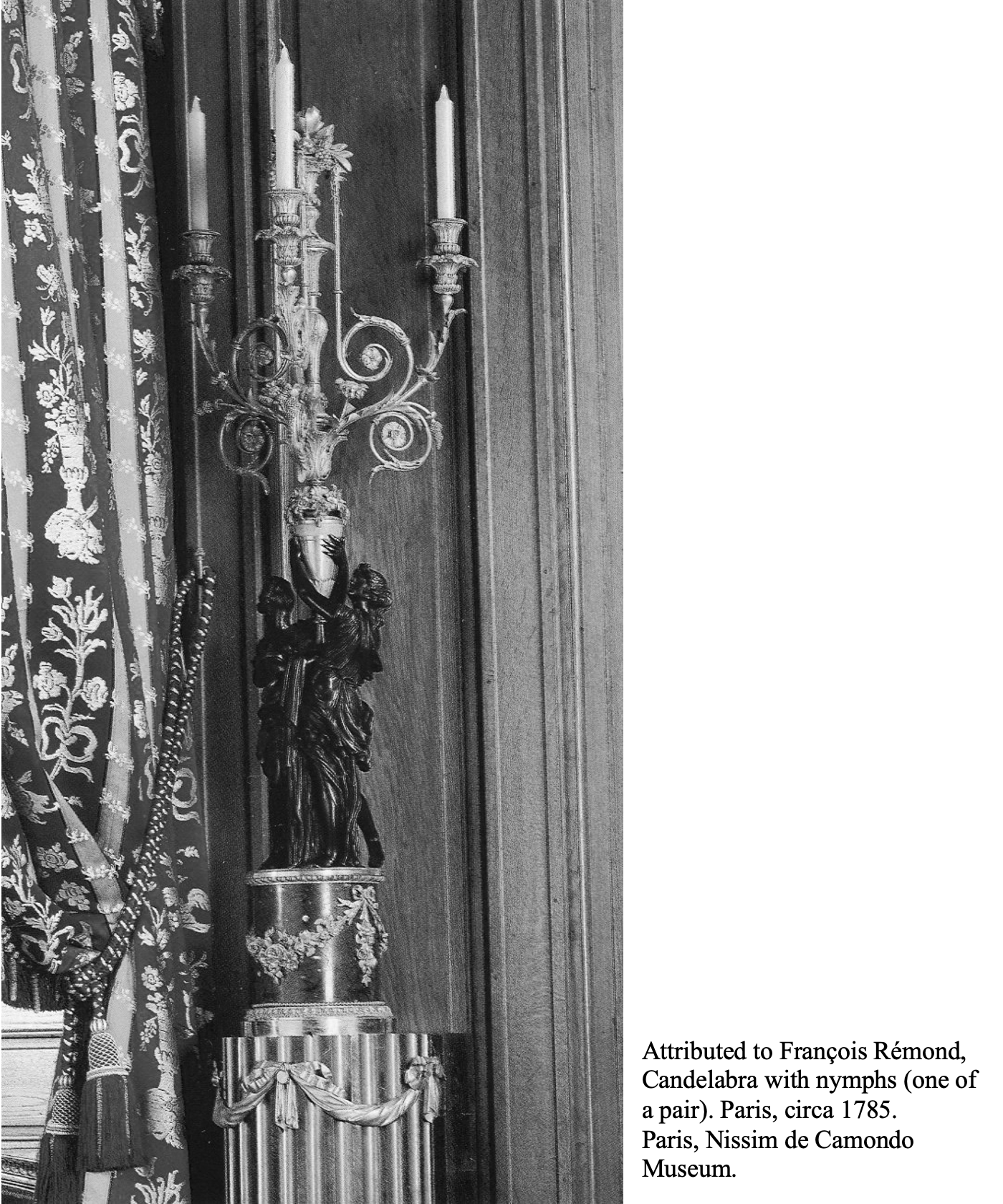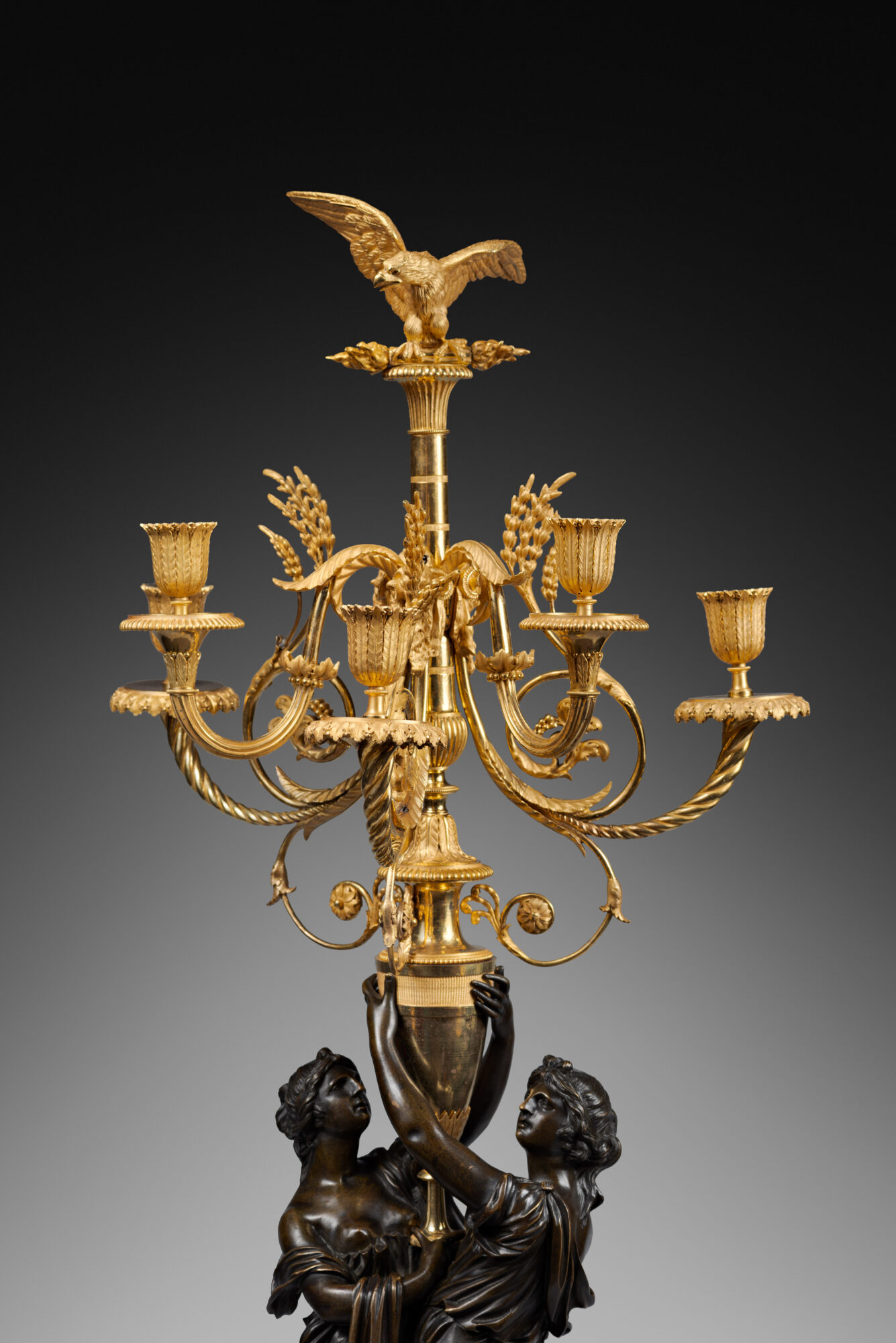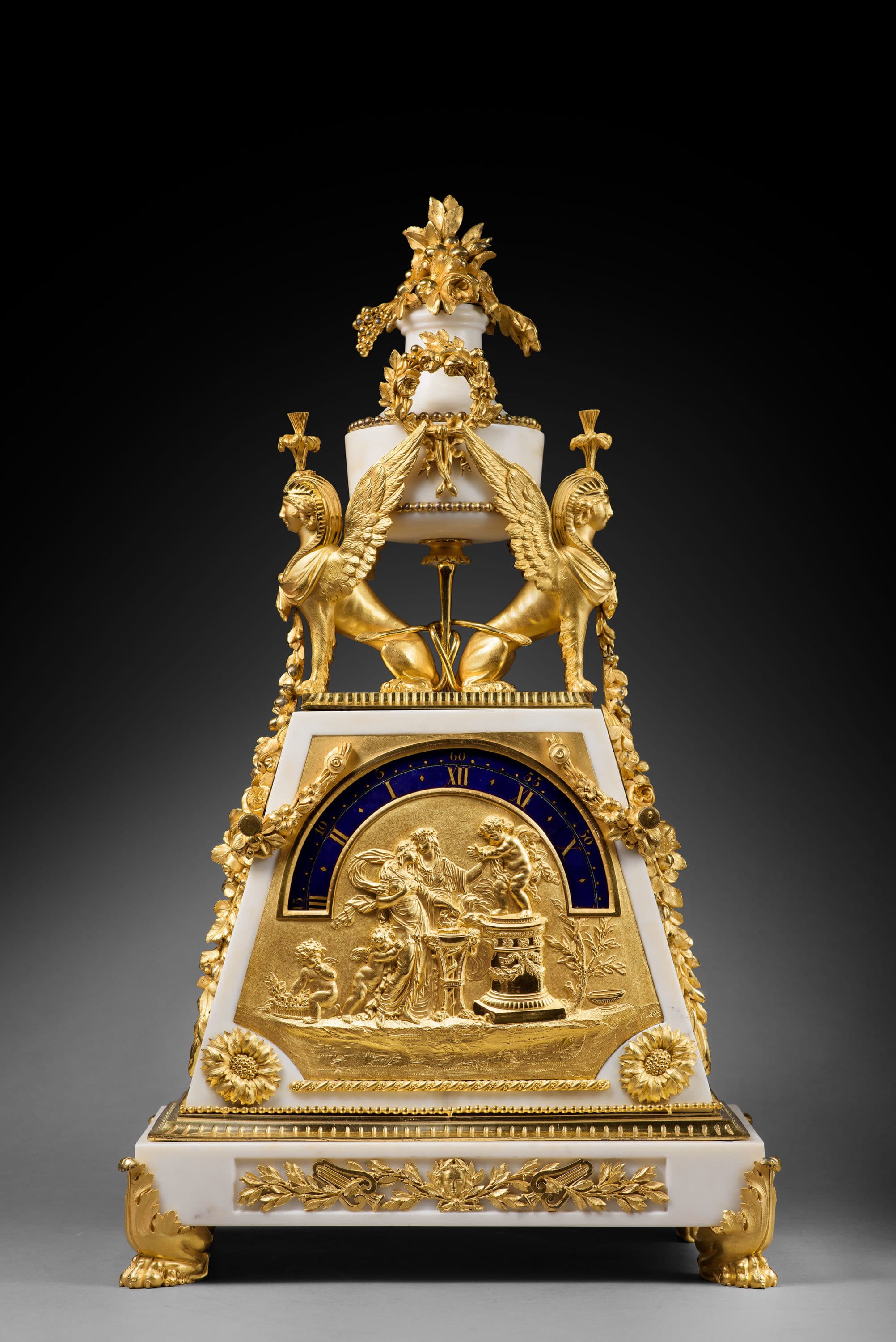Important Pair of Green Marble and Patinated and Gilt Bronze Five-Light Candelabra with Matte and Burnished Finishing

Attributed to master bronze-caster François Rémond
Paris, late 18th century, circa 1790-1800
The present candelabra, made of finely chased and knurled bronze that is patinated and gilt, with matte and burnished finishing, are composed of groups of two magnificent young women, dressed in Greek tunics, one of whom turns her head towards the viewer. They support a neoclassical vase with knurled friezes and bead motifs, and a spreading foot, from which issues the light curving light arms, set around a central stem that is adorned with ram’s heads and terminates in a gadrooned basin that supports an eagle with outstretched wing that holds thunderbolts in its claws. Five branches, whose spiral arms are adorned with leaves, flowers, and seeds, support basins with leaf friezes and gadrooning, surmounted by drip pans in the form of leafy corollas. The candelabra stand on circular green marble bases that are adorned with friezes of beads, egg-and-dart and waterleaf friezes framing a low relief band that depicts vestals holding flower garlands and dancing around the altar of Love. The quadrangular bases have curved, canted corners.
The unusual design of this important pair of candelabra was inspired by two plaster groups that sculptor Etienne-Maurice Falconet (1716-1791) exhibited at the 1761 Salon; they were sketched in the margin of the Guide to the Salon by Gabriel de Saint-Aubin. A second drawing by Gabriel de Saint-Aubin is illustrated in H. Ottomeyer and P. Pröschel, Vergoldete Bronzen, Die Bronzearbeiten des Spätbarock und Klassizismus, Band I, Munich, 1986, p. 254 and 284, figs. 4.7.1 and 4.14.11. Originally, the groups by Falconet were meant to be cast in silver, but they were particularly influential for Parisian bronze casters during the last third of the 18th century. Certain candelabra, some with variations, were inspired by his compositions. One model, much smaller than the present pair, was in the well-known collection of the Marquise de Ganay, née Ridgway (sold in Paris, Me Lair-Dubreuil, Galerie Georges Petit, May 8-10, 1922, lot 234).
A small number of pairs of candelabra are known that are identical to the present pair – though they feature certain variations in the treatment of the bases and the light arms. One pair, formerly in the collection of Monsieur Lévy, was sold in Paris, Me Lyon, Galerie Georges Petit, June 18-19, 1917, lot 160. A second pair was in the Galeries Hartman; it is illustrated in H. Ottomeyer and P. Pröschel, op.cit., Munich, 1986, Band I, p. 284, fig. 4.14.10. A third pair, dating from the late 18th or early 19th century, is on display in Pavlovsk Palace in Saint Petersburg (see A. Kuchumov, Pavlovsk, Palace & Park, Aurora Art Publishers, Leningrad, 1975, p. 221, fig. 177). One final pair is identical to the present one, though its two light bouquets are much less elaborate; it is in the Ostankino Palace in Moscow (see Rossignol, L’armature du luminaire russe, XVIIIe-XIXe siècles, Moscow, 1920, fig. 152).
François Rémond (circa 1747 - 1812)
Along with Pierre Gouthière, he was one of the most important Parisian chaser-gilders of the last third of the 18th century. He began his apprenticeship in 1763 and became a master chaser-gilder in 1774. His great talent quickly won him a wealthy clientele, including certain members of the Court. Through the marchand-mercier Dominique Daguerre, François Rémond was involved in furnishing the homes of most of the important collectors of the late 18th century, supplying them with exceptional clock cases, firedogs, and candelabra. These elegant and innovative pieces greatly contributed to his fame.

















